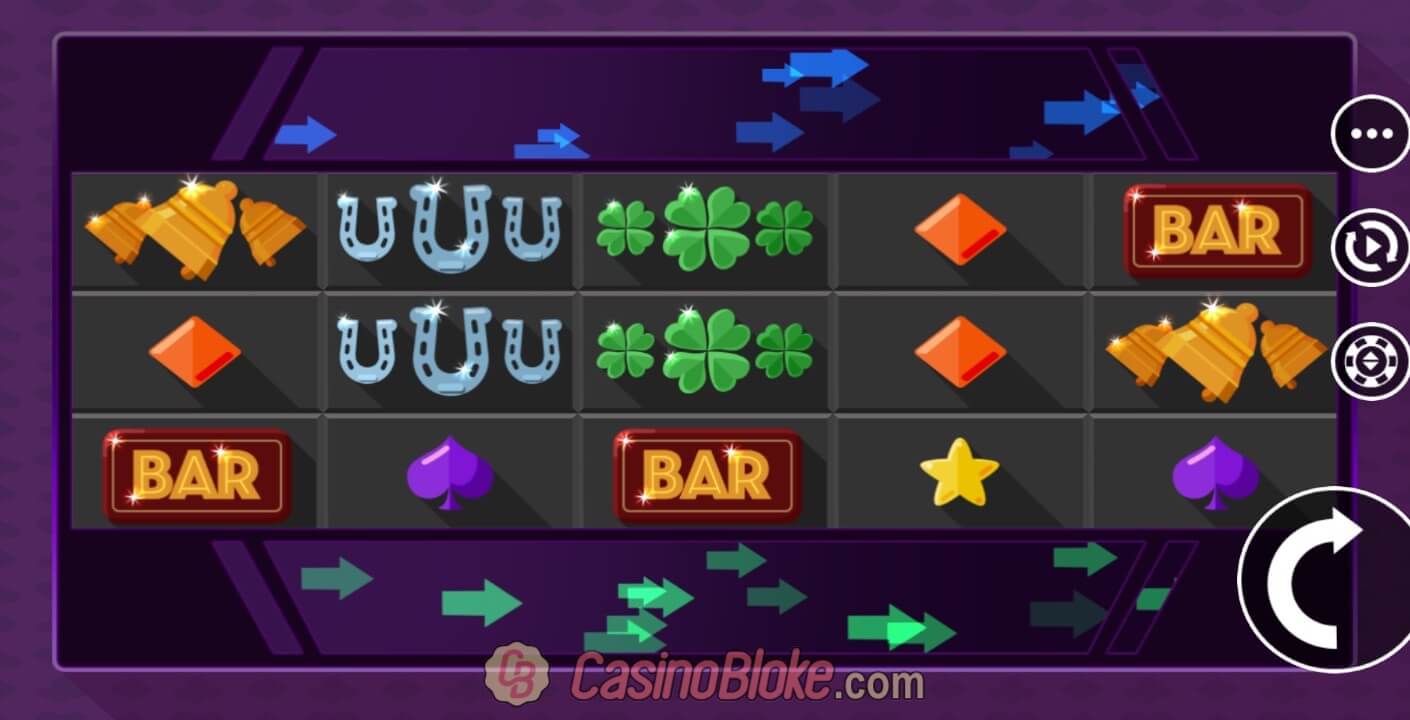Sidewinder Slot
Sidewinder is a type of slot car or motorized model car in which the motor shaft is parallel to the driven axle (usually the rear), and power is transmitted through spur gears or, sometimes, a belt, friction or even by direct drive. The word also refers to the transversely mounted motor of such a car.
Sidewinder Slot November 14, 2018 Lucky Pants Bingo is the haven of premium quality games for nothing! The bingo site presents the latest slot games as soon as they are disclosed to the casino market.
A similar type of slot car that has the motor shaft mounted at an angle to the driven axle is the anglewinder. In general, the sidewinder and anglewinder are less common arrangements than the inline motor, in which the shaft is perpendicular to the driven axle and drives it with bevel gears or a pinion and crown gear. Historically, they are also less common than the pancake motor, in which the shaft is vertical, and power is carried to the axle by a chain of gears to a pinion and crown arrangement. Because they require more space between the drive wheels, the sidewinder and anglewinder arrangements are more common in 1:32, and especially 1:24, than in the smaller scales.

- 'INDY'S BEST SLOT CAR DRAG STRIP'. Furex Outside Gear Sidewinder Chassis Furex003. NAP1020 MOTOR TAB HOT SLOTS. NAP1015 NAP SIDEWINDER.
- The Sidewinder slot is a classic medium variance fruity with a modern twist – and we like it. The jackpot prize is 2,270x your bet which is no mean number and it’s in the bonus where you’ll really get the opportunity to win big thanks to linking up those wilds from the top and bottom sidewinders to create expanded wild reels.

The sidewinder and to an extent the anglewinder configurations are often seen as superior for slot racing cars. This is because when accelerating, the reverse torque of the motor transfers weight to the front of the vehicle, and therefore the guide that keeps it on the track. This allows the slot racer to accelerate through corners. There is also a further advantage as, if dynamic braking is used, the reverse torque of the motor then transfers weight to the rear wheels, which invariably are the dominant grip wheels on a slot car. Conversely the reverse torque effect on inline motor configurations transfers weight from side to side and destabilises the car.

Schematic diagrams of common chassis layouts:
The flat, vertical-shaft pancake motor is seen end-on, with the shaft pointing toward the reader.

Use of the sidewinder drive goes back to the first commercially available slot cars. Some of Lionel's original slot car models of 1911–1914 used a type of sidewinder drive. Victory Industries used a sidewinder motor in their 1957 VIP line of 1:32 cars. This brand debuted at the same time as the famous Scalextric line and shares with Scalextric the honor of being the first modern manufactured slot-car system.[2]
Sidewinder Slot Canyon
See also[edit]
- Anglewinder - Angle-motored slot car
- Inline - Longitudinally-motored slot car
- Pancake - Vertical-motored slot car
- Slot car - Technical information and history of the hobby
- Slot car racing - The competitive hobby, organizations, etc.
References[edit]
Slotcar Sidewinder Vs Anglewinder
- ^Hertz, L. H. 'The Complete Book of Model Raceways and Roadways', 2nd Ed. 1967, p. 24.
- ^VIP Roadways.
Sidewinder Slot Review
Closest Restroom: No restrooms nearby. Follow principle 3 of Leave No Trace (LNT).GPS Data: GPS data for the unmarked route is for supplemental purposes only. Take a map and compass when exploring the trail-less wilderness.
- GPX file: (universal format for use in most mobile applications and GPS units)
- KML file: (used with some mobile applications and Google Earth & Maps)
- Map: Printable guide handy for your hike.
Route Description
Sidewinder Canyon is both physically and mentally a very demanding hike. Climbing over vertical ledges over 6 ft (2m) high and squeezing or crawling into tight spaces 1.5 ft (0.5m) wide is required. There are no signs identifying the parking or the hike. You are entering designated wilderness.Sidewinder Canyon is the large canyon just south of the parking area. Avoid the foothills and narrow canyons just east of the parking area. Instead head uphill directly south around the foothills where it's a left hand turn (east) into Sidewinder Canyon in approximately 1,500 ft (457m).
Crawl into the crack on the lower left where you'll climb up and over a different boulder not yet visible in the picture to the right. Once over the boulder, you will squeeze through a short tight space (1.5ft/0.5m) wide where it may be necessary to remove your pack. Once through the tight space you will be inside slot #1 where this short yet deep canyon becomes so dark that you'll need a headlamp or flashlight. Return to the main canyon via the same route. Total length of Slot#1 is only 0.10 miles (0.16km).